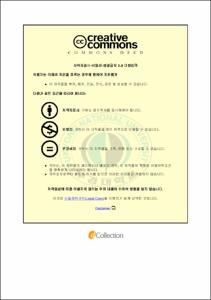u-헬스케어시스템을 위한 WSN 기반의 고신뢰성 라우팅 프로토콜
- Abstract
- The rate of elderly population has been increasing rapidly, faster than any other age groups. For the aged group, many of them are facing high risk factors of chronic diseases such as: cardiovascular, stroke, high blood pressure etc. Therefore, a healthcare system is needed to closely monitor the changes of vital signs in elderly patients to provide diagnosis and treatment in order to maintain healthy lives.
In recent years, the development of bio-sensor, information and communications technology has led to the combination of healthcare and communications technology. This has produced various opportunities for developing a ubiquitous healthcare system, enabling remote management and the physiological monitoring of chronic disease and emergency conditions. However, existing ubiquitous healthcare systems using general personal area network(PAN) technology have drawback of weak RF strength of wireless signals due to the wireless signals passing through walls. Thus, the communication range is reduced and this leads to a dead spot which causes communication-disconnect between the mobile nodes and gateway. It also limits the moving range of a patient indoors. For this reason, routing protocols in wireless sensor networks(WSN) with self-organizing and multi-hop capabilities can be regarded as special techniques to extend network coverage and to enhance reliability for wireless connectivity in an indoor environment.
In this research, an optimal routing protocol has been designed to guarantee reliable vital data transfer in healthcare system. This thesis also presents a reliability evaluation of four WSN-based routing protocols in a ubiquitous healthcare system: Bi-direction MCF, flooding, leach and fast link exchange based Bi-direction protocol. The purpose of these routing protocol evaluations is to satisfy the quality-of-service(QoS) demand in real-time vital signal transmission. Small size, wearable-type mobile nodes based on wireless sensor networks have been designed and developed. The mobile nodes can collect ECG, activity, blood pressure, and blood sugar data signals from the human body and form a multi-hop network with relay nodes to extend the network range in WSN. Performance analysis is done to obtain some important parameters in terms of distance and reception rate between the nodes. Based on this performance evaluation, experiments are carried out to maximize the routing protocol efficiency in relay nodes deployment scheme.
In this thesis, a ubiquitous healthcare system had also been designed to achieve mobility and flexibility combining WSN and code division multiple access(CDMA) technology. A query processor is added to mobile phone and mobile nodes to selectively use any devices(ECG, blood pressure and blood sugar module) and control the self-organizing network of mobile nodes in WSN. Vital signs from mobile nodes are analysed using a developed cellular phone application on whether the signs are abnormal or normal using three healthcare parameters:ECG, blood pressure, and blood sugar.
Keyword : u-healthcare system, Wireless sensor network protocol, Flooding, Leach, MCF, Mobile healthcare, wearable healthcare system
- Issued Date
- 2011
- Awarded Date
- 2011. 8
- Type
- Dissertation
- Publisher
- 부경대학교
- Department
- 대학원 전자공학과
- Advisor
- 정완영
- Table Of Contents
- Ⅰ. 서론 1
Ⅱ. 무선센서네트워크와 헬스케어 기술 및 동향 6
2.1 무선센서네트워크 기술 6
2.2 무선센서네트워크 기반 헬스케어 어플리케이션 17
2.3 헬스케어를 위한 생체신호 22
2.3.1 심전도 22
2.3.2 혈압 및 혈당 25
2.3.3 신체 활동량 29
Ⅲ. 무선센서네트워크 기반 헬스케어 플랫폼 31
3.1 헬스케어 시스템의 개요 31
3.2 하드웨어 시스템 33
3.2.1 생체센서노드 33
3.2.2 생체 인터페이스 39
3.2.2.1 심전도 신호 발생기용 센서 인터페이스 39
3.2.2.2 신체 착용형 생체 센서 인터페이스 44
3.3 신호처리와 전송기법 50
3.3.1 고샘플링에 따른 심전도 노이즈 제거 50
3.3.2 활동량 신호인 SVM 신호추출 51
3.3.3 버스트 전송기법 53
3.4 헬스케어를 위한 라우팅 프로토콜 56
3.4.1 무선 센서네트워크 라우팅 프로토콜 개요 56
3.4.2 헬스케어에 적용한 라우팅 프로토콜 60
3.4.3 헬스케어용 라우팅 프로토콜 구현 65
3.4.4 신속한 링크 변환 기법 설계 71
Ⅳ. 휴대폰용 헬스케어 시스템 75
4.1 휴대폰용 헬스케어 하드웨어 75
4.2 질의 프로세서와 패킷포맷 설계 78
4.3 휴대폰에서의 생체신호처리 82
4.3.1 심전도의 비정상파 검출 82
4.3.2 혈압과 혈당의 비정상파 검출 83
4.4. 생체신호와 원격모니터링 85
Ⅴ.헬스케어용 라우팅 프로토콜의 실험 및 결과 88
5.1 심전도 및 활동량 신호측정 88
5.1.1 심전도와 활동량 실험 구성 88
5.1.2 동적인 상태 89
5.1.3 정적인 상태 92
5.2 심전도 노이즈제거 95
5.3 무선센서네트워크에서 노드 간 통신 성능평가 96
5.3.1 무선센서네트워크의 제안된 자원을 활용하기 위한 필요성 96
5.3.2 배터리 상태와 RF 세기에 따른 통신 거리측정 96
5.3.3 RF 세기와 배치 상태에 따른 통신 거리측정 98
5.3.4 RF 세기와 배치상태에 따른 수신 100
5.4 신뢰성 라우팅 프로토콜에 대한 성능평가 103
5.4.1 헬스케어용 라우팅 프로토콜 평가에 대한 개요 103
5.4.2 Flooding, leach, Bi-direction 라우팅 프로토콜의 신뢰성 실험 및 평가 103
5.4.2.1 홉간 패킷전송 103
5.4.2.2 생체노드의 확장성에 따른 전송 104
5.4.2.3 실제 환경에서의 라우팅 프로토콜들에 대한 성능평가 106
5.4.2.4 넓은 실내 환경에서의 Bi-direction MCF 라우팅 프로토콜 성능평가 111
5.4.3 이동성이 고려된 신속한 링크 변환 Bi-direction MCF 라우팅 프로토콜 평가 114
Ⅵ. 결론 119
참고문헌 122
감사의 글 129
List of Publication 131
- Degree
- Doctor
- Files in This Item:
-
-
Download
 u-헬스케어시스템을 위한 WSN 기반의 고신뢰성 라우팅 프로토콜.pdf
기타 데이터 / 7.36 MB / Adobe PDF
u-헬스케어시스템을 위한 WSN 기반의 고신뢰성 라우팅 프로토콜.pdf
기타 데이터 / 7.36 MB / Adobe PDF
-
Items in Repository are protected by copyright, with all rights reserved, unless otherwise indicated.